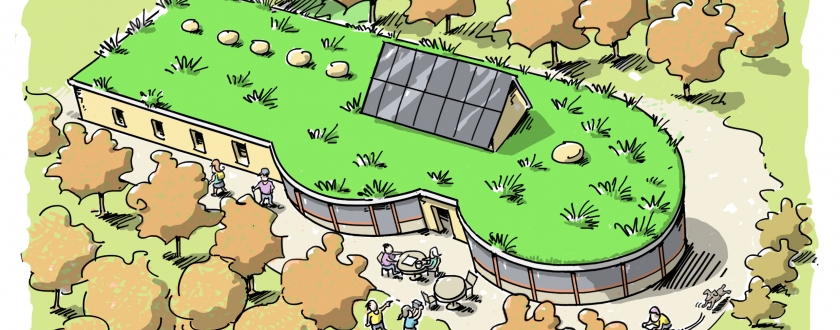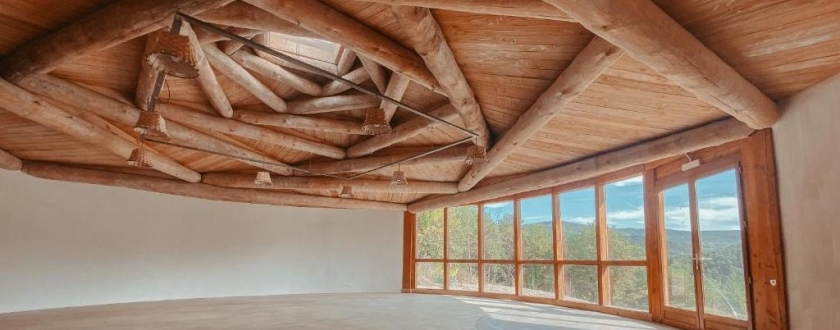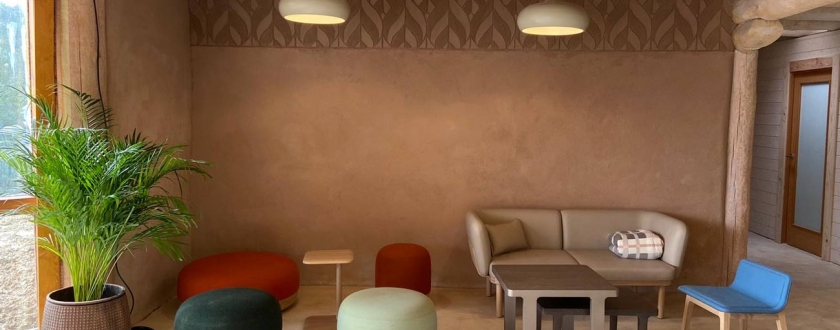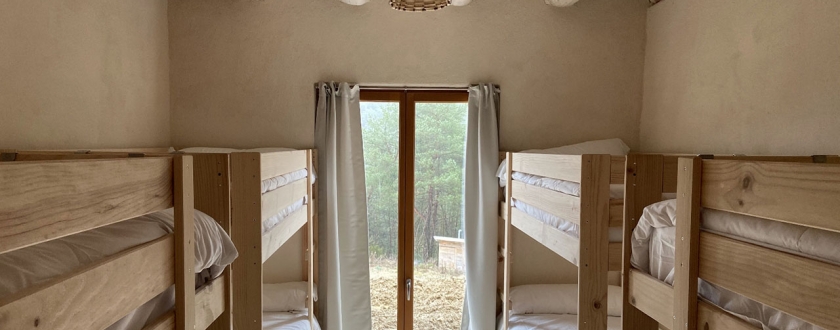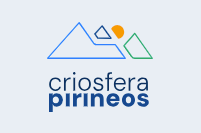AGOTZENEA. Eco-educational space. Sustainable integrated projects.
Description of the case study
Agotzenea is an eco-educational project whose backbone is a demonstration space built with green building techniques and criteria. The building takes advantage of natural resources and materials from its surroundings. It produces its own energy, stores and reuses rainwater, purifies its grey water, and produces sustainable food. It also fully adapts to the environment where it is located: slope, orientation, and climate conditions. It is a place that interacts with its environment as well as the community.
Agotzenea aims to create experiences for all ages that help raise public awareness on the importance of living a sustainable existence that is healthy for ourselves and the environment around us. This is a living example of infrastructure that is adapted to its environment and climate conditions with sustainable management of natural resources available that is measurable, palpable, and replicable.
» A benchmark project for other administrations to replicate this rehabilitation methodology through processes that are integrated into the community, with circular economy and green building criteria.
» A learning and tourism option for those that want to experience Agotzenea.
» Consolidating collaborations and deepening public-private collaboration procedures, as well as training individuals so they can join the job market in the field of green building.
» Producing a real model within sustainable management of inhabited plots.
» Training individuals in green building techniques.
» Raising public awareness on the sustainable use of natural resources.
» Promoting green building-related housing and entrepreneurial projects.
» Offering the possibility of seeing and understanding a system implementing passive and renewable energies that combine passive solar and photovoltaic, thermal solar, and biomass to produce energy and comfort within the building.
» 15 green building technique training sessions with a total of 250 students, and 50 actions between talks, speakers, and guided technical visits to raise public awareness on the sustainable use of natural resources.
» Construction of the main building with a show room concept that allows different construction systems and concepts to be shown (such as inertia and insulation).
» Construction of three 40 m2 cabins with green climate criteria connected to best practice tourism experiences.
» 40 consulting sessions aimed at promoting public and private housing and entrepreneurial projects connected to green building in Navarre.
» Pyrenees Plan contribution: technical guidance and coordination for a pilot public building refurbishment process using green building criteria, for and by youth renting social housing through mentoring methodology.
Case study developed and implemented as a climate change adaptation measure.
Cederna Garalur, Fiare Banca Populare, Elkargi
Additional Information
SNE (Navarre Employment Service), CENIFER (national benchmark centre for renewable energy and energy efficiency), Donibane Integrated Training Centre, Okambuva s. Coop (Valencia), IEB (Instituto Español de Baubioligie), RCP (Straw Construction Network), Straw Natur coop. (Austria), ALKI (France), Miga arquitectura (Extremadura), ACIMUT, Escuela los Guindales (Malaga), TERRA-PAZ (Chile), and various natural material supply companies.
Success factors:
Its green building educational, training, and guiding nature from the project’s start: a meeting place and laboratory of ideas.
Limiting factors:
» The individuals that design and make Agotzena a reality do not come from a formal training background in green building (because this doesn’t exist, among other reasons). They are not architects, however, they are assisted by many collaborators for learning.
» On an administrative level, having the permits to be able to start the project is a long, costly, and sometimes frustrating process.
» Banks would not finance them, and sometimes the project’s innovation meant uncertainty that risk departments did not see as viable. Nevertheless, thanks to the ethical bank FIARE, the reciprocal guarantee company ELKARGI, and LEADER funds received through CEDERNA GARALUR management, they secured the necessary financing.
Total investment: €450,000 (expenses were exclusively for materials, since labour was provided by the cooperative). Investment executed as a percentage of the total: 82% (annual breakdown: 1st year €230,000 2nd year €100,000 3rd year €80,000 4th year €40,000).
Financing: Self-funding: 15% External source: Fiare Ethical Bank (80% advanced) of which €65,000 correspond to European funds, and €16,000 to Government of Navarre aid for cooperative investment.
No, in no document. Yes, it is referred to in SITNA
01/01/2017 - 06/01/2021 (4 years- in progress)
Reference information
PYRENEAN CLIMATE CHANGE OBSERVATORY
Avenida Nuestra Señora de la Victoria, 8
22.700 - Jaca
Huesca - España
+34 974 36 31 00
info_opcc@ctp.org

